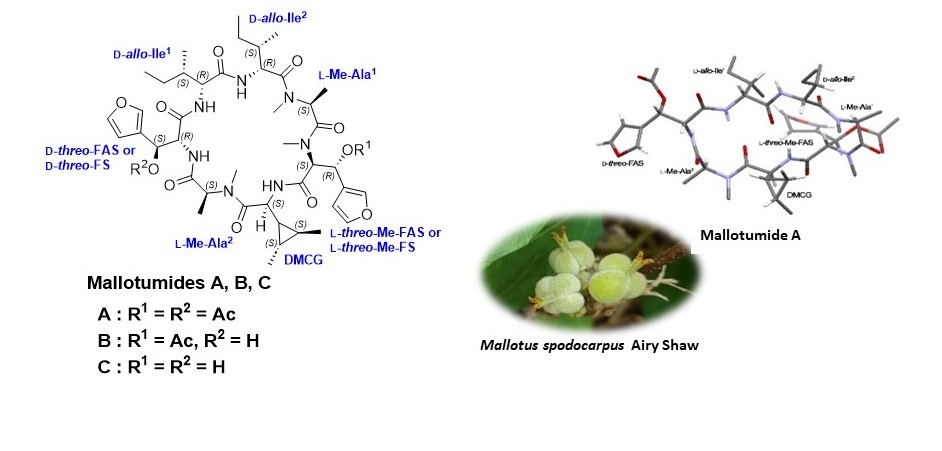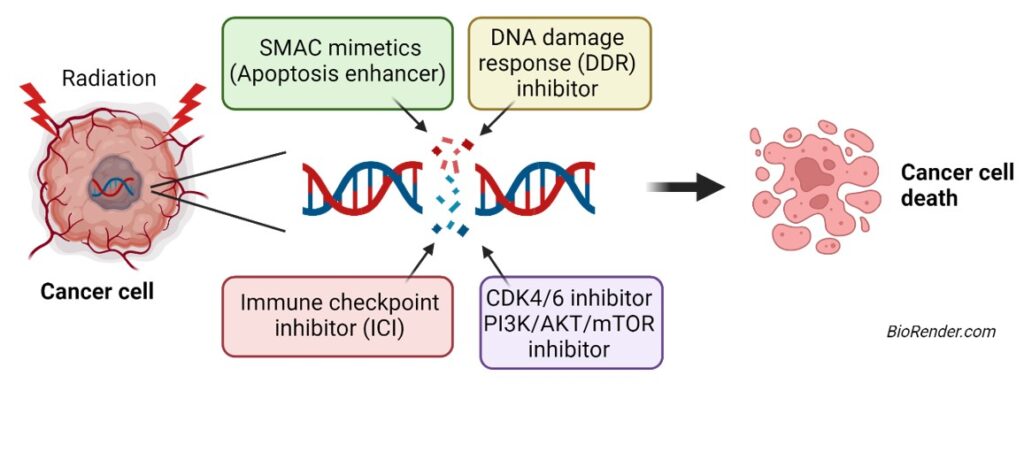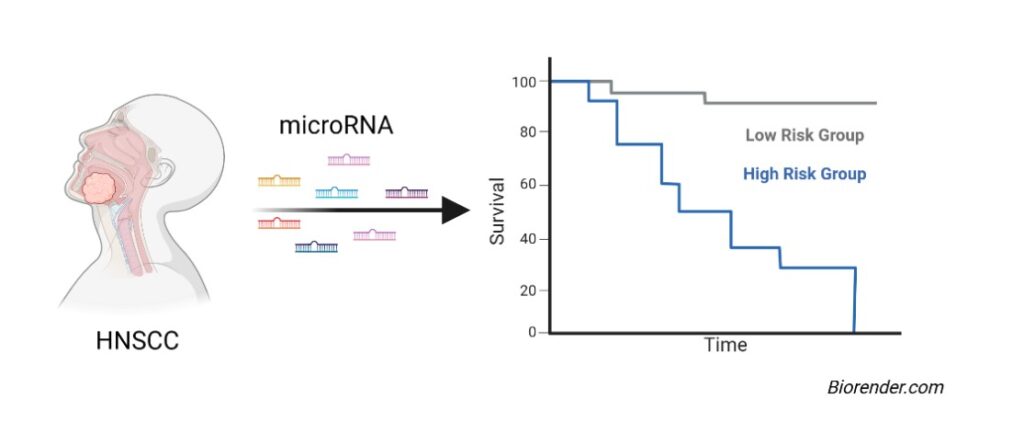
Assoc. Prof. Dr. Arthit Chairoungdua
E-mail: arthit.chi@mahidol.ac.th, (66)-2201-5615
Education
Research Interests
- Ph.D. (Medial Science), Kyorin University School of Medicine, 2003
- M.Sc. (Toxicology), Mahidol University, 1998
- B.N.S. (Nursing Science), Khonkaen University, 1993
- Study on roles of extracellular vesicles as modulators of cell-to-cell communication in health and disease
- Anticancer drug development from natural resources
.....

1. UN SDG ที่เกี่ยวข้อง : SDG 3 (Good Health and Well-Being) สรุปผลงานวิจัยเรื่อง : สารประกอบ Mallotumides A−C ที่มีฤทธิ์ยัยยั้งเซลล์มะเร็งจากรากของพืชนางพญาหน้าขาว Mallotus spodocarpus (Mallotumides A−C: Potent Cytotoxic Cycloheptapeptides from the Roots of Mallotus spodocarpus) สรุปโดย : Natthapat Sawektreeratana, Chongkon Krachangchaeng, Prapadsorn Pittayanurak, Nolan M. Betterley, Arthit Chairoungdua, Anongnat Wongpan, Wittaya Panvongsa, Pattarapapa Janthakit, Phattananawee Nalaoh, Vinich Promarak, Narong Nuntasaen, Vichai Reutrakul, Chutima Kuhakarn,* and Sakchai Hongthong. Mallotumides A−C เป็นสารประกอบเพปไทด์ที่มีโครงสร้างเป็นวงและมีจำนวนกรดอะมิโนจำนวน 7 ตัว ได้จากรากของพืชนางพญาหน้าขาว (Mallotus spodocarpus Airy Shaw) โดยยืนยันโครงสร้างทางเคมีจากการวิเคราะห์ข้อมูลทางสเปกโทรสโกปี สเตอริโอเคมีของสาร mallotumide A ยืนยันโดยใช้ข้อมูลของเอ็กซ์เรย์ผลึกเดี่ยว สาร mallotumides A−C แสดงความเป็นพิษต่อเซลล์ที่มีศักยภาพต่อเซลล์มะเร็งต่างๆ ที่มีค่า IC50 อยู่ในช่วงตั้งแต่ 0.60 ถึง 4.02 นาโนโมลาร์ สาร Mallotumides A และ B แสดงการยับยั้งการเจริญเติบโตของเซลล์มะเร็ง FaDu และ HaCaT โดยขึ้นอยู่กับปริมาณที่ใช้และเวลา โดยมีค่า IC50 ต่ำกว่าค่าของ สาร Cisplatin ซึ่งเป็นยามาตรฐานสำหรับการรักษามะเร็งศีรษะและคอ การค้นพบนี้ระบุสารประกอบธรรมชาติที่มีศักยภาพโดดเด่นในการพัฒนาต่อไปเพื่อใช้เป็นยารักษามะเร็ง (Cycloheptapeptides, mallotumides A−C were isolated from the roots of Mallotus spodocarpus Airy Shaw. The chemical structures were elucidated by extensive spectroscopic analysis. The absolute configuration of mallotumide A was determined by single-crystal X-ray crystallographic data. mallotumides A−C exhibited potent cytotoxicity against various cancer cell lines with IC50 values ranging from 0.60 to 4.02 nM. Mallotumides A and B exhibited dose and time-dependent cytotoxic effects against FaDu and HaCaT cell lines, with IC50 values lower than that of cisplatin, the standard drug for the treatment of head and neck cancer. This discovery identified natural compounds with remarkable potential for further development as anticancer therapeutics.)

2. UN SDG ที่เกี่ยวข้อง : SDG 3 (Good Health and Well-Being) สรุปผลงานวิจัยเรื่อง : Evolving role of novel radiosensitizers and immune checkpoint inhibitors in (chemo)radiotherapy of locally advanced head and neck squamous cell carcinoma (บทบาทของยาเพิ่มความไวต่อรังสีและตัวยับยั้งระบบภูมิคุ้มกันต่อการรักษาโรคมะเร็งศีรษะและลำคอด้วยวิธีรังสีรักษา) สรุปโดย Nuttapong Ngamphaiboon, Arthit Chairoungdua, Thanate Dajsakdipon, Chuleeporn Jiarpinitnun. Head and neck squamous cell carcinoma is in Thailand's top 10th of cancers. Most patients are diagnosed in an advanced state in which surgical resection is not applicable. Chemotherapy is the standard treatment for this locally advanced head and neck squamous cell carcinoma (LA-HNSCC). However, the survival rate of patients remains poor. Several advanced radiotherapy techniques for treating LA-HNSCC have recently been introduced, demonstrating treatment outcome improvement. However, the development of systemic therapy as a radiosensitizing agent has progressed slowly and remains an unmet need. Here, we summarize the most recent clinical development and mechanism of novel radiosensitizing agents and immune checkpoint inhibitors in combination with radiotherapy for treating LA-HNSCC. Several novel radiosensitizers have emerged as some of the most promising radiosensitizers. (มะเร็งศีรษะและลำคอเป็นมะเร็งที่พบบ่อยทั่วโลก ในประเทศไทยเป็นมะเร็งที่พบบ่อยใน 10 อันดับแรก คนไข้ส่วนใหญ่ถูกวินิจฉัยเมื่อระยะของโรครุนแรง ทำให้ผลการรักษาด้วยวิธีการผ่าตัดไม่เป็นที่น่าพอใจ คนไข้จะถูกรักษาด้วยวิธีรังสีรักษาร่วมกับยาเคมีบำบัดซึ่งเป็นวิธีการรักษามาตราฐานที่ใช้ในปัจจุบัน ซึ่งยาเคมีบำบัดจะไปเพิ่มการตอบสนองของเซลล์มะเร็งต่อการการฉายแสง อย่างไรก็ตามคนไข้ก็ยังมีการพยากรณ์โรคที่ไม่ดี มีอัตราการรอดชีวิตต่ำ ปัจจุบันได้มีการพัฒนาวิธีการรักษาด้วยวิธีรังสีรักษาใหม่ ๆ สำหรับคนไข้โรคมะเร็งศีรษะและลำคอ โดยเฉพาะในรายที่รุ่นแรง ซึ่งพบว่ามีการพยากรณ์โรคที่ดีขึ้น แต่การพัฒนายาเคมีบำบัดหรือยาอื่น ๆ เพื่อเพิ่มความไวของเซลล์มะเร็งต่อการรักษาด้วยวิธีรังสีรักษายังค่อนข้างจำกัด ในบทความนี้ได้สรุปงานวิจัยปัจจุบันในระดับคลินิกที่เกี่ยวกับการพัฒนายาใหม่ ๆ เพื่อเพิ่มความไวของเซลล์มะเร็งต่อการรักษาด้วยวิธีรังสีรักษา ตลอดจนกลไกที่เกี่ยวข้อง พบว่ามียาหลายตัวมีศักยภาพที่อนาคตอาจสามารถนำมาใช้รักษาคนไข้โรคมะเร็งศีรษะและลำคอได้)

3. UN SDG ที่เกี่ยวข้อง : SDG 3 (Good Health and Well-Being) สรุปผลงานวิจัยเรื่อง : Six-MicroRNA Prognostic Signature in Patients with Locally Advanced Head and Neck Squamous Cell Carcinoma (การพัฒนาไมโครอาร์เอ็นเอเพื่อใช้เป็นตัวพยากรณ์ความรุนแรงของโรคมะเร็งศีรษะและลำคอ) สรุปโดย Wittawin Worakitchanon, Wittaya Panvongsa, Teerada Siripoon, Sarunya Kitdumrongthum, Anongnat Wongpan, Lalida Arsa, Narumol Trachu, Natini Jinawath, Arthit Chairoungdua, and Nuttapong Ngamphaiboon. Head and neck squamous cell carcinoma (HNSCC) is among the top ten cancers in Thailand. However, the survival rate for HNSCC is relatively poor due to a lack of effective prognostic biomarkers. To address this, we identified six microRNAs (miRNAs) that predict survival outcomes in patients with locally advanced HNSCC (LA-HNSCC). We created a risk score using these miRNAs to classify patients into highrisk and low-risk groups. Patients in the high-risk group had shorter survival times. We validated this signature in a separate group of patients using droplet-digital PCR, confirming that high-risk patients had significantly shorter survival. This six-miRNA signature shows promise as a prognostic biomarker for LAHNSCC patients. (มะเร็งศีรษะและลำคอเป็นมะเร็งที่พบบ่อยทั่วโลกรวมถึงประเทศไทย ซึ่งพบบ่อยใน 10 อันดับแรก ปัจจุบันยังขาดตัวบ่งชี้ทางชีวภาพที่มีประสิทธิในการพยากรณ์ความรุนแรงของโรค ทำให้อัตราการรอดชีวิตต่ำ จากการวิเคราะห์ข้อมูลของการแสดงออกของไมโครอาร์เอ็นเอในชิ้นเนื้อมะเร็งศีรษะและลำคอเทียบกับชิ้นเนื้อปกติ พบว่าการแสดงออกของไมโครอาร์เอ็นเอ 6 ชนิด สามารถแยกคนไข้ออกเป็น 2 กลุ่ม คือ กลุ่มความเสี่ยงสูงและกลุ่มความเสี่ยงต่ำ โดยอัตราการรอดชีวิตของกลุ่มความเสี่ยงสูงจะสั้นกว่าของกลุ่มความเสี่ยงต่ำ ซึ่งสามารถยืนยันผลที่ได้ในการศึกษาจากชิ้นเนื้อของคนไข้ไทยจากโรงพยาบาลรามาธิบดี โดยสรุป แสดงออกของไมโครอาร์เอ็นเอทั้ง 6 ชนิดนี้สามารถพัฒนาต่อยอดไปเป็นตัวบ่งชี้ทางชีวภาพที่มีประสิทธิในการพยากรณ์ความรุนแรงของโรคมะเร็งศีรษะและลำคอ)

